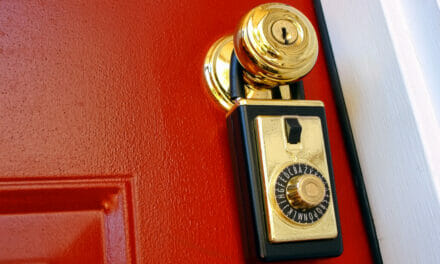According to numbers from the United States Census Bureau, there were almost 700,000 new residential homes sold in December 2019 across the country. That’s a lot of transactions taking place and one could infer that translates into a large number of home inspections. How many of those home inspections truly provided the best value and the right level of service for each client? As it turns out, that is an incredibly difficult question to answer—but we can look at some of the services many home inspectors provide to help determine what is the right level of service and what we, as home inspectors, should be offering clients to make sure that the largest purchase most of them have undertaken in their life is properly evaluated and they (and their real estate agent) have the information needed to make intelligent decisions throughout the negotiation.
The geographic location, local laws and regulations as well as the type of transaction can all have an impact on the extensiveness of the property evaluation. Setting aside the local laws or state requirements—how does a home inspector consult with a client to make a value-based recommendation that will satisfy the client’s needs while not overloading them with unnecessary costs? How do you, as an inspector, translate the services you are offering/recommending in a way your client can understand and what services should be recommended? While we can’t cover every type of add-on service and every unique situation, we can discuss some of the more prevalent ancillary services and make a value proposition, demonstrating in terms anyone could understand the benefit from having the appropriate services performed prior to the transaction coming to a close. It’s important to remember that we are only scratching the surface and your individual recommendations may differ based on a litany of factors.
Leading off the list is radon testing. If you aren’t familiar with the dangers associated with radon gas exposure, now would be a good time to educate yourself. There are numerous online resources available including the National Radon Proficiency Program (NRPP) and the US Environmental Protection Agency (EPA). The EPA, U.S. Surgeon General and the Centers for Disease Control and Prevention (CDC) strongly recommend that all homebuyers have an indoor radon test performed prior to purchasing a home. That last statement of fact can be extremely valuable when consulting with a client about what services are right for their inspection. It’s also important to have a sense of what impacts NOT conducting this test can have on the folks living in the home as well as the potential financial implications. Knowing what the average cost of a radon mitigation system in the market can help with the value proposition during your consultation. Let’s look at a general example and assume the average cost of a radon test is $150 and the average cost of a radon mitigation system in in the $1,000 ballpark. The benefit to the client by having the test conducted is twofold: 1) If the test results show elevated levels of radon gas in the structure, the buyer now has additional leverage to ask the sellers to have the home appropriately mitigated by a certified professional. The clients can ask the sellers to have this done (prior to taking possession of the home) and save their time, money and energy. 2) Even if the test comes back under the EPA’s recommended action threshold, there is the peace-of-mind associated with knowing the health risks are minimal and that their children, friends and pets are not being exposed to exceedingly dangerous levels of radon gas. Most homebuyers would agree that spending $150 today to potentially save $1,000 tomorrow is a pretty solid investment. Even if you, as a home inspector, don’t have the equipment necessary to provide radon testing along with your inspection—there are providers who offer these services at wholesale rates so you can add it right in to your services. A pioneer in this service category in the Denver, Colorado and Atlanta, Georgia markets is The Radon Testing Company.
Another often overlooked system and related service is having the sewer line scoped. Similar to radon testing, some inspectors already offer this service along with their standard residential home inspection. The barrier to entry for many is simply the cost of the camera system. Many of these (quality) rigs start in the $5,000 range and can go up from there. As with any product offering, the key is understanding how this service benefits clients and how to translate that value in real terms they can understand. Again, using Denver as an example, the average cost of a typical sewer line repair starts around $2,500 and the sky is the limit depending on the required repairs. Couple that with the fact that a home inspection is a visual, non-invasive procedure—meaning an inspector cannot evaluate the sewer line without this special equipment. The age of the home, location and nearby flora can also make this a critical service to perform prior to the buyers taking possession. Most clients have probably never priced out sewer line repairs so a little education on the potential expenses that this simple added component could save them is critical. There are providers that offer this service to home inspectors like Sewer Optics, that can make adding this service to all of your inspections as simple as a phone call.
The final ancillary offering we’ll discuss today is mold testing. Mold testing is a valuable addition to your standard suite of services and is often a stand-alone inspection performed for homes NOT undergoing a change in ownership. Just like radon testing and sewer scopes, it requires special equipment to take air samples and those samples need to be analyzed at a laboratory. The value in being able to offer this service comes in many forms, but convenience is one of the key factors. If/when you discover signs of mold-like substances, being able to consult with your client and subsequently perform a mold inspection without the necessity to schedule a separate appointment can’t be overstated. Not to mention remediation of a mold issue can be an extremely expensive and intrusive process, identifying mold issues for clients prior to them taking possession can save them time, energy, hassle, stress and money.
In summary, the basic mechanics for exhibiting the value of ancillary services are fundamentally the same. Once you have the information to educate your clients on the real value of these services and the necessary certifications, training and/or partnership to offer these services, not only will you be providing a higher quality overall service to your clients, but you will also realize more income as a result.
For more information on some of the services mentioned above, check out these resources:





